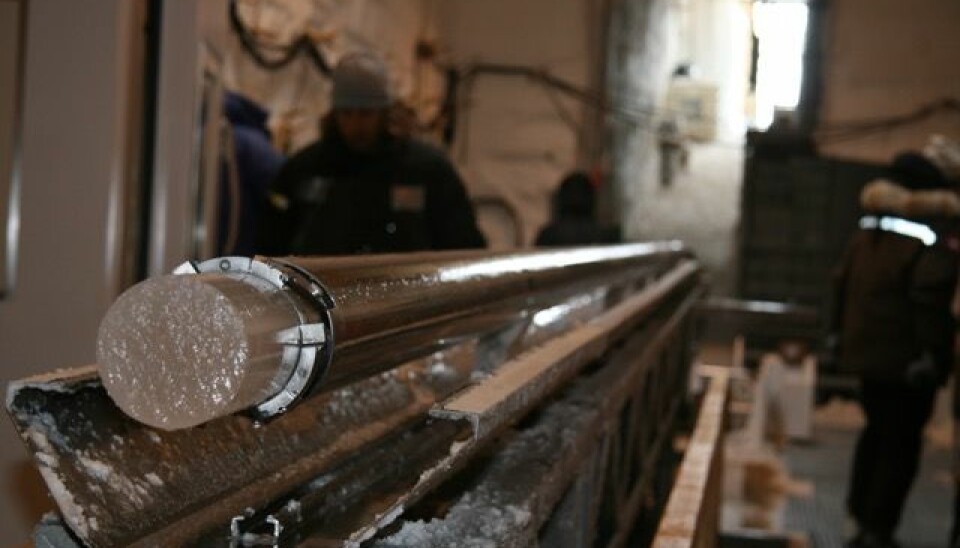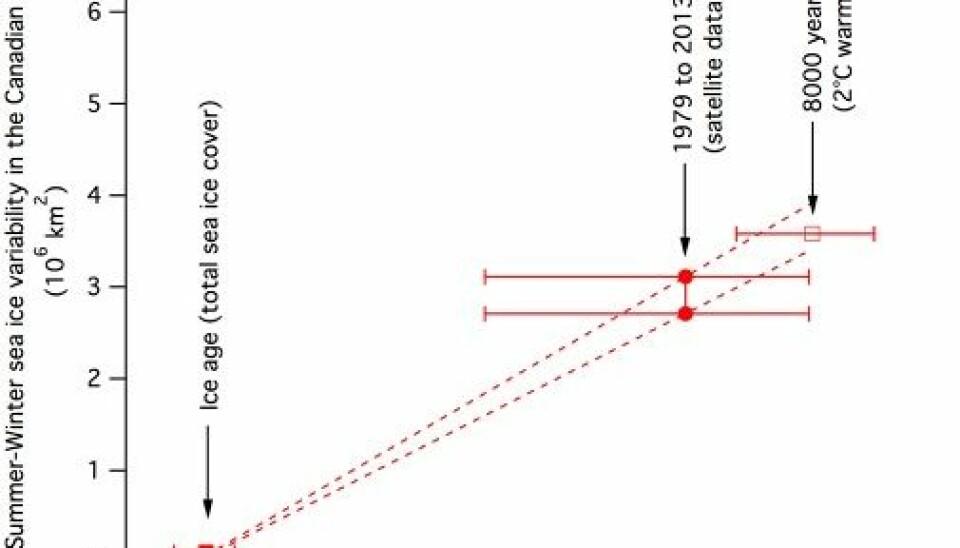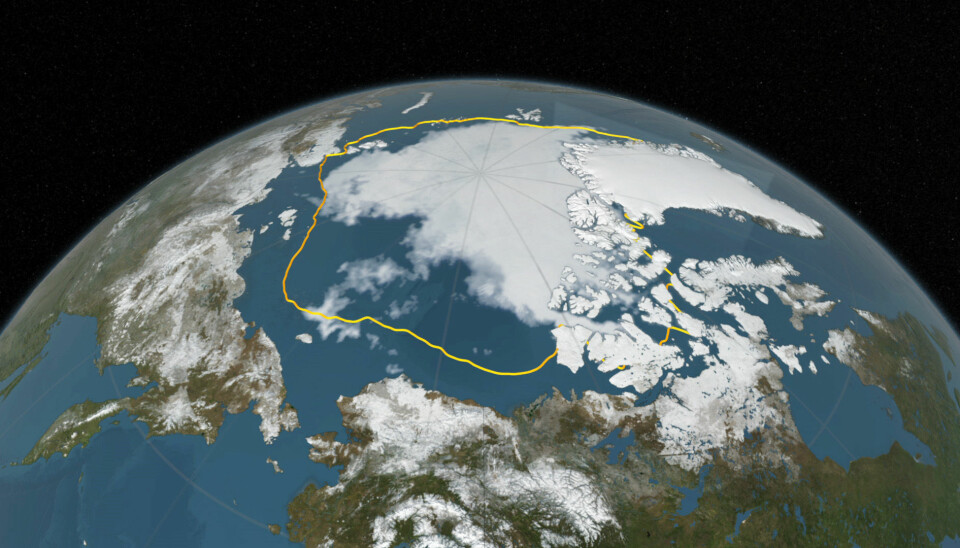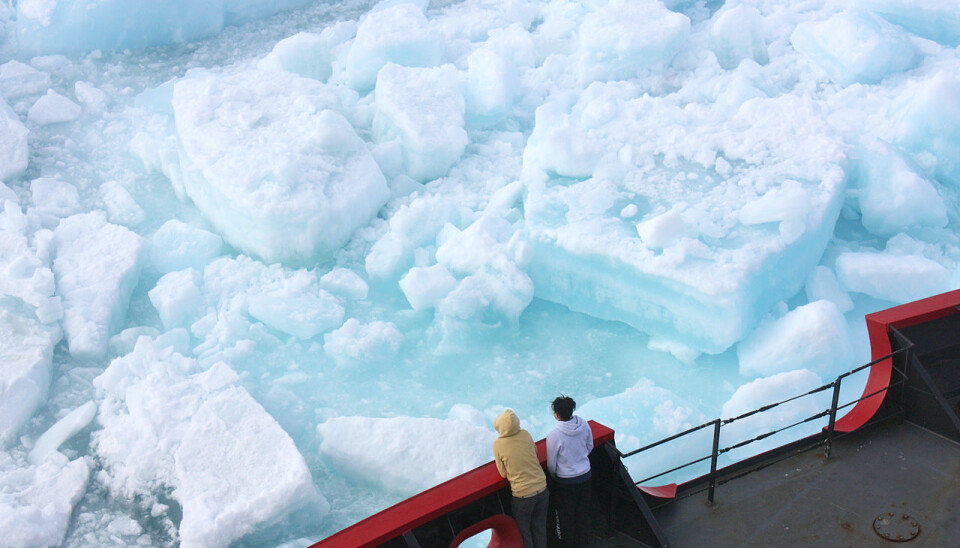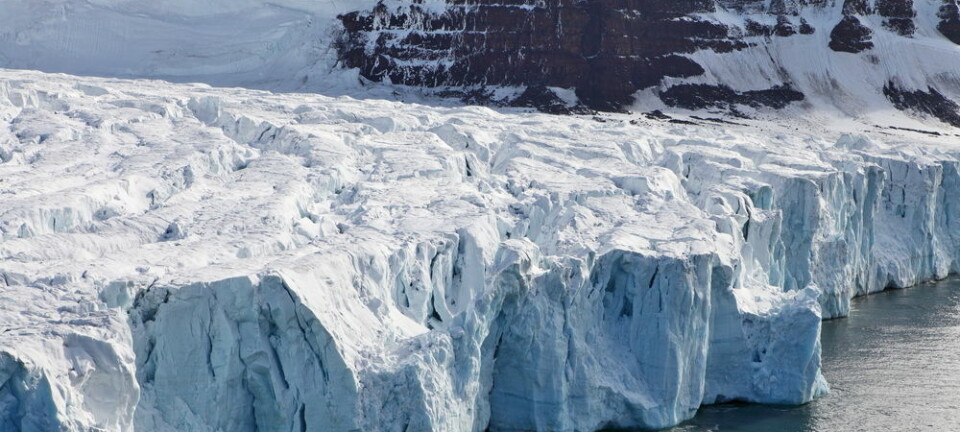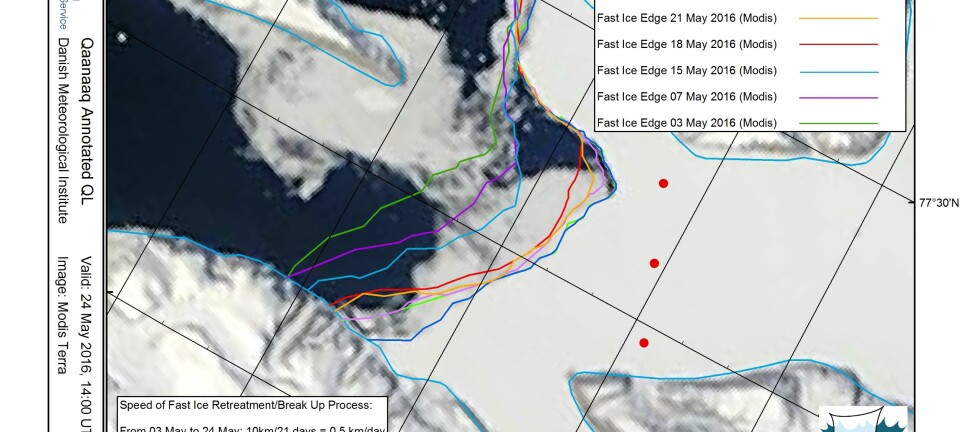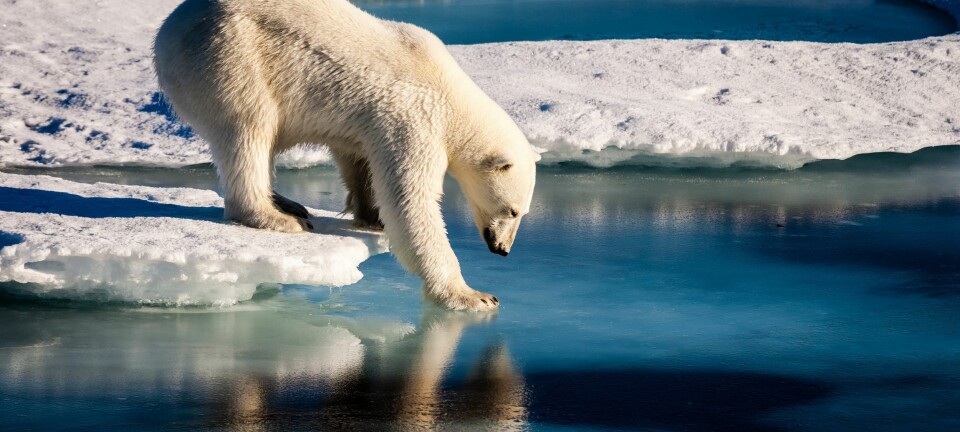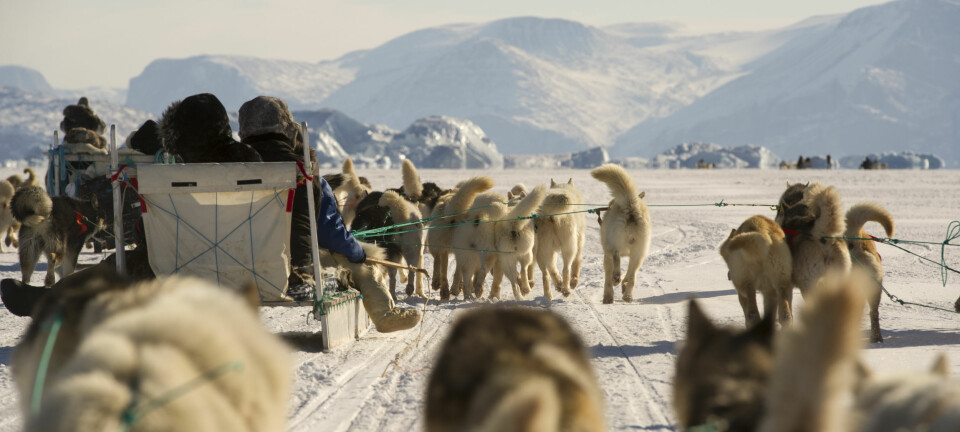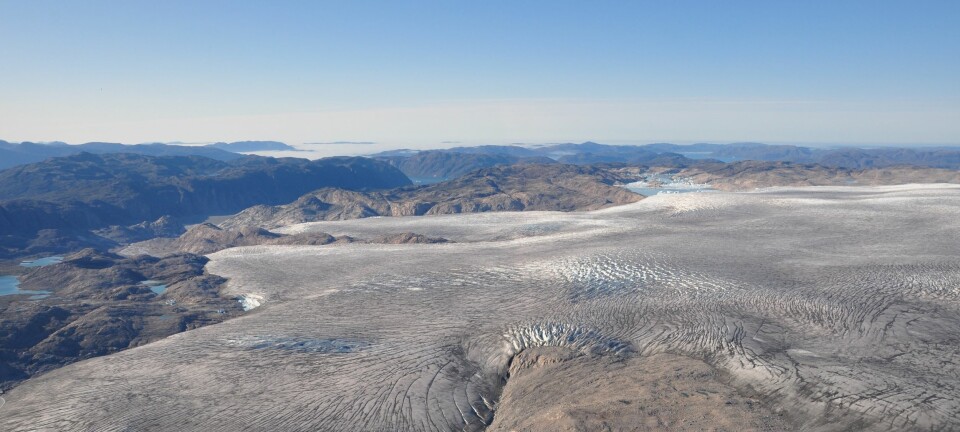Arctic sea ice is approaching the limit of natural variability
Around 8,000 years ago, Arctic sea ice was lower than it is today--but rapid decline in the last 40 years means it is fast approaching this natural limit.
Using a new chemical technique, scientists have managed to document the expansion and decline of Arctic sea ice over the past 125,000 years.
“This is the first time we’ve been able to reconstruct Arctic sea ice in the past from a Greenland ice core,” says co-author Paul Vallelonga, associate professor from the Niels Bohr Institute Centre for Ice and Climate, at the University of Copenhagen, Denmark.
While sea ice is currently declining rapidly and has reached record lows in the last decade, it still has some way to go before it exceeds the minima that was last seen 8,000 years ago. But according to the new study, we were already about 90 per cent of the way there, even before the record breaking lows of 2015 and 2016.
The results redefine the natural limit of sea ice decline in the Arctic over the last 10,000 years, says Vallelonga.
It’s good news that we’re still within the Arctic’s “natural threshold” if you like. But over the last 40 years we’ve seen sea ice changing rapidly, and we’re fast approaching this minimum level.
“It’s good news that we’re still within the Arctic’s “natural threshold” if you like. But over the last 40 years we’ve seen sea ice changing rapidly, and we’re fast approaching this minimum level,” he says.
The new research is published in the journal Scientific Reports.
The longest record of Arctic sea ice
“The results are certainly interesting and new,” says Svend Visby Funder, a former senior curator at the Natural History Museum of Denmark. Funder was not involved in the new study but has published extensively on the history of the Greenland ice sheet and sea ice in the Arctic.
“They now have information about sea ice from further back in time than was previously possible,” he says.
Funder published a 10,000 year long record of sea ice in 2011, which until now held the record as the longest reconstruction of Arctic sea ice.
He studied the remains of drift wood, carried by sea ice from Canada and Siberia, and dumped on the beaches of north Greenland. The presence of this material along with other lines of evidence allowed Funder and colleagues to estimate periods of low and high sea ice.
Read More: When will the Arctic be ice free?
Thick multi-year ice at a record low 8,000 years ago
Funder’s work also identified this warm period around 8,000 years ago, when Greenland was two to three degrees warmer than today, as a time when the extent of Arctic sea ice was particularly low. But the new results go a step further, he says.
“What’s really new here is that they go further back in time and they can distinguish between the different types of ice. This is an important distinction to make,” says Funder.
There are two types of sea ice: so-called first-year sea ice, which is fresh, young ice. And then there is multi-year sea ice, which is older and thicker.
Multi-year sea ice is about 10 to 15 years-old and can be up to 10 metres thick. It is much more resilient and able to withstand the summer melt season. First-year sea ice on the other hand is much more vulnerable. It is thin and patchy, and its surface is riddled with channels of salty sea water. It often melts away completely in summer.
The new results confirm that it was precisely this type of thick, multi-year ice that reached record lows 8,000 years ago when it was replaced by the thinner, seasonal ice--the exact same trend that is happening today.
“It’s this [multi-year ice] that’s holding the Arctic together,” says Vallelonga. “And this is what’s rapidly decreasing now. As climate change takes effect we see less of this old, thick sea ice, and more of the seasonal, newer sea ice.”
See how summer sea ice extent has been declining since 1979, when satellites first started to monitor Arctic sea ice. (Video: ScienceNordic)
New technique to measure past sea ice extent
Vallelonga and his colleagues developed a new method based on the chemistry recorded in an ice core from north-west Greenland.
They measured the concentration of bromine (Br) in the ice core, which is indicative of first-year ice in the surrounding area of the Canadian Arctic, which includes the Canadian archipelago, Baffin Bay, and Hudson Bay.
“In the Arctic spring, first-year sea ice is at its most extensive and the atmospheric concentration of bromine increases rapidly, in what we call a bromine explosion,” says Vallelonga.
A bromine explosion is when large clouds of bromine develop in the air just above the ice, as the gas is activated by sunlight and interacts with ozone.
“It’s called ‘Arctic haze.’ It creates lots of health problems for people in the Arctic,” says Vallelonga.
If this bromine-enriched air made it to Greenland, then traces of it would be recorded in the ice. And sure enough, this is exactly what they found.
Read More: Melting Greenland ice has not slowed down ocean circulation
Computer models confirm sea ice chemistry
But the scientists still needed to confirm that the bromine recorded in the ice core was specifically indicative of thin, first-year sea ice in the Canadian Arctic. So they used a computer model to simulate how bromine behaved over thick ice, thin ice, and the open sea.
“We wanted to see whether the numbers added up. How long does it take for these salts [bromine] to get to the ice core site? And can the enrichment processes that happens over the sea ice, explain the ratios and concentrations that we see in the ice core?” says Vallelonga.
They found that bromine was only enriched in the air above the young, fresh ice. And that this enrichment lasted for 72 hours from the time at which the bromine-explosion first started to form.
This was more than enough time to be transported the 1,000 km from the Canadian Arctic to the site of the ice core in West Greenland.
Read More: Arctic sea ice at a record low
Need more data to study rapid climate change
Marit-Solveig Seidenkrantz from the Arctic Research Centre at Aarhus University, Denmark, also studies Arctic sea ice.
“Sea ice is a hot topic, so to speak, and what they’re doing is to test a fairly new proxy that has been used in Antarctica and Svalbard, but not in Greenland before. So it’s great to have another proxy to reconstruct sea ice [in this area],” says Seidenkrantz.
She says more work is needed before we can confirm that ice throughout the entire Arctic basin was thinner 8,000 years ago, or that sea ice back then declined as quickly as it is right now.
“Their record has a resolution of about 20 years [i.e. each sample represents 20 years of ice deposition], which is great, but it’s not enough to see the fast changes, like what’s happening now,” she says.
“It’s a nice piece of work in the quest for a reliable sea ice chemical tracer,” writes Professor Christophe Kinnard, from the Université du Québec à Trois-Rivières, Canada, in an email to ScienceNordic.
Kinnard has previously published a reconstruction of Arctic sea ice extent over the last 1,500 years.
See how scientists from the Niels Bohr Institute set about drilling the 2.5 kilometre long ice core used in the new study. (Video: Niels Bohr Institute)
Preliminary study will be expanded
Kinnard is also cautious not to get too excited over one single ice core record. We can only assume that the atmospheric circulation patterns that carried bromine from the Canadian Arctic to Greenland were the same back then as they are today, he says, but we do not know this for sure.
“This is perhaps the only lingering doubt I have about their results,” he writes. “And this is in fact a problem affecting any reconstruction based on a single ice core record, not only theirs.”
Vallelonga is aware of these issues. He says this study is just the first stage.
“This paper really establishes the baseline and reference point for future work,” says Vallelonga.
“Now, we can use bromine to start to see what happened with sea ice, to look at different sectors over the Arctic, and to look in more detail at rapid and abrupt changes that are analogous to the situation today.”
Scientific links
- Canadian Arctic sea ice reconstructed from bromine in the Greenland NEEM ice core
- A 10,000-Year Record of Arctic Ocean Sea-Ice Variability—View from the Beach
- Reconstructed changes in Arctic sea ice over the past 1,450 years

